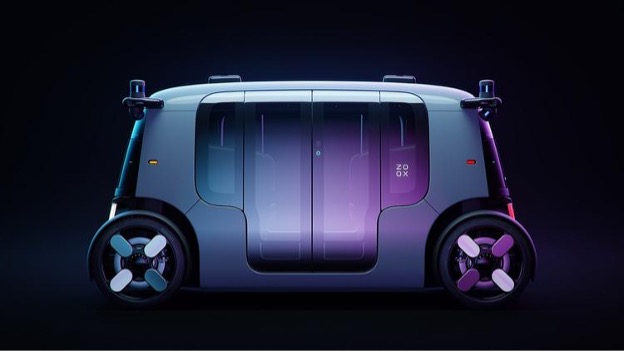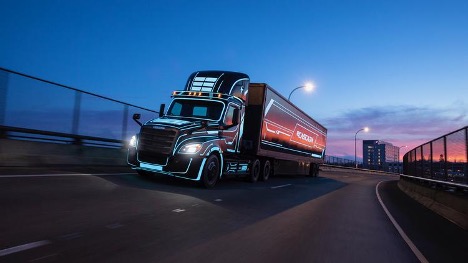4 big ways you can ride into the future of mobility — and now is the time to jump on
New forms of transportation — such as the Switchblade flying car, made in Oregon — will become mainstream this decade.
It’s 4:48 p.m. on a blustery, hat-tossing Thursday in April 2026. You’re outside Washington Square Mall, running late for an appointment downtown. Gotta book.
You could use Amazon Prime to call for a ZOOX robotaxi to share with strangers, jump on a hoverboard to scoot down the covered micro-mobility Max Lane, or call an electric air taxi to get you downtown in 15 minutes for $190. Which will you choose?
Get ready; the future of mobility is coming faster than you think. Curious? We are seeing four opportunities that you should jump on right now, getting ahead of the curve.
The intersection of climate change, Covid-19 and congestion is dramatically shifting how we get around, how we acquire the tangible goods we crave and how we intersect with intelligence to make our cities thrive in the future.
Opportunity forecast #1: Cars are becoming smartphones with wheels
We predict that fully autonomous vehicles will be mainstream by 2026. Cars will become so automated that we won’t have to focus on driving. Instead, our cars will become vehicles for transactions, meetings and entertainment, with your phone technology seamlessly built into your dash.
That’s great, because the average consumer wastes 54 hours per year stuck in traffic. Innovation should focus new services that make wasted time more valuable, as well as leverage AI and quantum computing to navigate traffic more effectively.
According to Accenture, 22% of automotive-related revenue will come from digital business models by 2030, which could mean anything from shared subscriptions and pay-per-view entertainment to gaming while in your autonomous vehicle.
For example, Ford and Google are establishing a new collaborative group, Team Upshift, to unlock personalized consumer experiences, and drive data-driven opportunities leveraging Android and Google for voice commands and entertainment.
Opportunity forecast #2: New mobility products merge with human factors design
New mobility modes are growing fast, which will make cars a less-dominant species of local transportation. That’s a good thing, since nearly half of all car trips are less than three miles. Here are the projections.
• E-bikes are exploding and are projected to rise from 3.7 million units sold in 2020 to 17 million units per year by 2030. MIT Media Lab is even developing “persuasive” bikes that come to you on demand, the way you currently hail a Lyft.
• Seen hoverboards and one-wheels whiz by lately? The global hoverboard market was $1.7 billion in 2018 and is projected to be $2.3 billion by 2025.
• E-scooters are also on the rise: the global installed base of shared e-kick scooters is expected to rise from 400,000 in 2020 to 1.3 million units by 2030.
Now is the time to develop products that satisfy mobile consumer cravings. The global market for online delivery is set to grow from $325 billion in 2020 to $470 billion by 2025. Rapid growth in food delivery services provides opportunities to design all sorts of new tools including food carriers and cargo bikes.
Sports and apparel brands should be designing products for more mobile consumers. Levi’s Commuter Pro has a full line of clothing made for people on the move.
Product development plans should leverage empathy-based research and design services to create what’s next. Portland-based firms such as C’EST WHAT? LLC and Ziba Design provide human-centered innovation and design strategy that aligns teams on the best path forward based on a deep understanding of evolving consumer behavior.
Opportunity forecast #3: Civic design and real estate
Modes of transportation for people and goods will change dramatically in the coming years, and now is the time to prepare for the impact on city and commercial building design.
New forms of shared autonomous vehicles are on the near horizon. Amazon’s ZOOX bi-directional robotaxi is collaborating with Portland-based FLIR to integrate thermal cameras for improved visibility and to classify pedestrians, cyclists and animals day and night all around the vehicle. “As we look ahead at the future of mobility, the new technologies that are being developed need to reach the same goal of helping save the lives of all vulnerable road users,” says Mike Walters, vice president, product management, FLIR Automotive Cameras.

Amazon’s ZOOX bi-directional robotaxi is collaborating with Portland-based FLIR to integrate thermal cameras for improved visibility and to classify pedestrians, cyclists and animals day and night all around the vehicle.
PHOTO COURTESY OF AMAZON
These new forms of mobility will impact future city design. Architects and urban planners should redesign grid patterns, streets and green zones for smoother interactions of pedestrians, micro-mobility and electric charging. Retailers should invite car-free pedestrian zones.
Jeff Allen, executive director of Portland-based FORTH, believes cities need to scale up fast to meet future needs: “Today, only 1% of vehicles now are electric, and we’re all trying to get as quickly as possible to a future where all of them are electric. In the near future, we need orders of magnitude more charging infrastructure.”
Allen also sees the future in holistic terms that foster diversity and equality: “I hope part of the future of mobility will be recognizing every trip is different. We need to make it easy for people to have good options that are affordable and more sustainable. We need a more comprehensive, coherent approach.”
Commercial buildings and hotels will become more appealing if spaces are designed for last-mile delivery of goods and services, including rooftop landing pads for air taxis and drone deliveries.
Commercial developers and employers will benefit by evolving electric fueling stations from utilitarian objects to experience-based integrations with food/beverage and entertainment.
Allen helps employers to “think about electric charging stations as kind of the next bike rack or the next recycling bin. If you’re going to be a progressive, environmentally sustainable employer who supports your employees and helps them make good decisions, you’re going to provide charging stations.”
Meanwhile, Redmond-based Samson Sky is making progress on their Switchblade air taxi concept, which is essentially a flying car that can both drive and fly for shorter trips. According to Sam Bousfield, CEO of Samson Sky, “we will have volume production by 2023 and already have reservations for more than 1,100 units.”
In terms of longer trips, the air taxi market is projected to be $1.5 trillion globally by 2040. Several companies including Airbus, Hyundai and Cadillac are actively developing concepts. Uber-Elevate (now Joby Aviation) has more than 1,000 test flights complete and are one of the companies along with Airbus Vahana to use Pendleton’s new $15 million industrial park dedicated to unmanned aircraft systems
(UAS) operators and manufacturers.
Sam Bousfield sees the vertical aircraft market as best for scheduled routes within specific points rather than on-demand. “I think we could have vertical take-off available by 2026, especially as a way to get from rural locations to airports.”
Opportunity forecast #4: Autonomous commercial distribution networks
Autonomous trucks are being road-tested currently by several brands around the world. Portland’s Daimler Trucks North America, the third-largest employer in the metro area, announced they have formed a “broad, global, strategic partnership” with Waymo, which recently raised $3 billion to deploy self-driving trucks. Daimler will combine Waymo’s industry-leading automated driver technology with a unique version of their Freightliner Cascadia, complementing their other strategic partnership with Torc Robotics. Prototypes are being road tested now in Virginia, New Mexico and Daimler’s Proving Grounds in Madras, Oregon.

The Freightliner eCascadia, expected in late 2022, will be built here in Portland at Daimler Trucks’ Truck Manufacturing Plant on Swan Island.
COURTESY OF DAIMLER TRUCKS NORTH AMERICA
According to Joanna Buttler, director of Daimler’s autonomous vehicle program, “We will be ready in the next decade with SAE Level Four highly automated driving systems, meaning without any human intervention in predictable circumstances.” Buttler refers to these potential scenarios as “operational design domains”and is deploying design thinking methods to “identify all the unknowns, make them known and develop use case scenarios.”
Buttler believes L4 automation will enable new business opportunities and require a full ecosystem. Autonomous trucks need a “mission control tower” and enhanced fleet management systems to dispatch, monitor and support. Terminals serving as launch and land points, as well as distribution centers for last-mile delivery will be needed for logistics. These trucks will incorporate innovations in sensors, computer hardware, software, and redundant systems like braking and steering.
In addition to collaborative partners in the ecosystem, Daimler will also need more talent in engineering, software and life-cycle innovation design in order to build their local team for future growth.
Buttler believes that “there is so much to learn along this journey, and the learning journey is the goal.” Daimler is leading the learning by taking an active role in creating safer and more efficient autonomous technology.
That blustery day in 2026 will be here before you know it. Wouldn’t it be better to create what is coming next instead of just being a passenger? Access a free “Guide To Future Skills” or learn more about the insights shared in this article.
C’EST WHAT? LLC is an innovation strategy and new product development firm that forecasts emerging opportunities and aligns teams on the best path forward. Our holistic approach is based on the concept of regeneration for people, organizations and communities. C’EST WHAT expertise includes ethnographic insights, foresights, strategy and concept creation.
Editor’s note: All quotes in this article have been sourced from individual interviews with the author.
Michael Perman is an innovation leader and CEO of C’EST WHAT? LLC (cestwhat.org) and author of CRAVING THE FUTURE®, Transforming Our Deepest Desires into New Realities, available at Powells Books and on iTunes.
